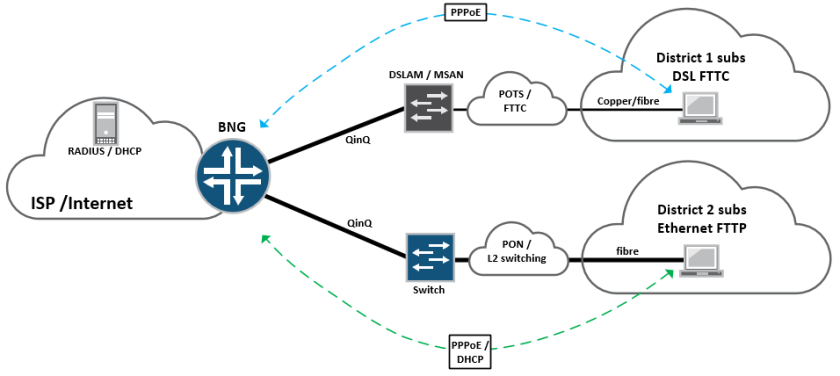0
I’ve been doing quite a lot of MX BNG stuff this year, so I thought I’d run through another quite flexible way of terminating broadband subscribers onto a Juniper MX router.
The feature is called Psuedowire headend termination, “PWHT” or simply Psuedowire head-end “PWHE” depending on whether you work for Cisco or Juniper? but it essentially solves a relatively simple problem.
In traditional broadband designs – especially in DSL “FTTC” or Fibre Ethernet “FTTP” we’re used to seeing large numbers of subscribers, connecting into the ISP edge at layer-2 with PPPoE or plain Ethernet. This is normally performed with VLANS, either via an MSAN (DSL/FTTC) or as is the case with Ethernet FTTP subscribers – a plain switched infrastructure or some form of passive-optical (PON/GPON) presentation:

These subscribers then terminate on a BNG node on the edge of the network, which would historically have been a Cisco 7200, GSR10k, Juniper ERX or Redback router, which essentially bridges the gap between the access network and the internet.
For very large service providers with millions of subscribers this sort of approach normally works well, because their customer base is so large; it makes sense for them to provision a full-size BNG node Continue reading

